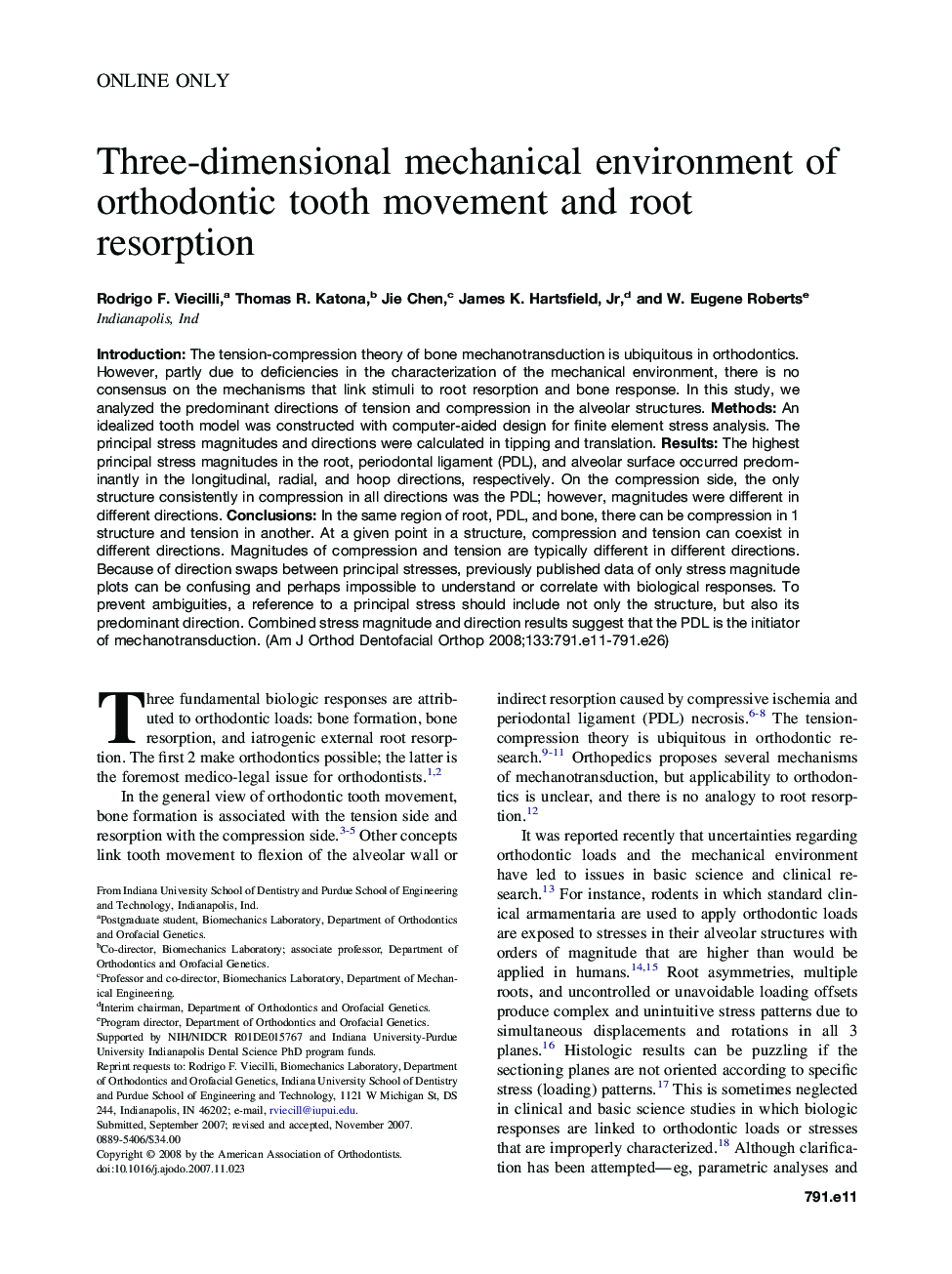| Article ID | Journal | Published Year | Pages | File Type |
|---|---|---|---|---|
| 3119085 | American Journal of Orthodontics and Dentofacial Orthopedics | 2008 | 16 Pages |
Abstract
Introduction: The tension-compression theory of bone mechanotransduction is ubiquitous in orthodontics. However, partly due to deficiencies in the characterization of the mechanical environment, there is no consensus on the mechanisms that link stimuli to root resorption and bone response. In this study, we analyzed the predominant directions of tension and compression in the alveolar structures. Methods: An idealized tooth model was constructed with computer-aided design for finite element stress analysis. The principal stress magnitudes and directions were calculated in tipping and translation. Results: The highest principal stress magnitudes in the root, periodontal ligament (PDL), and alveolar surface occurred predominantly in the longitudinal, radial, and hoop directions, respectively. On the compression side, the only structure consistently in compression in all directions was the PDL; however, magnitudes were different in different directions. Conclusions: In the same region of root, PDL, and bone, there can be compression in 1 structure and tension in another. At a given point in a structure, compression and tension can coexist in different directions. Magnitudes of compression and tension are typically different in different directions. Because of direction swaps between principal stresses, previously published data of only stress magnitude plots can be confusing and perhaps impossible to understand or correlate with biological responses. To prevent ambiguities, a reference to a principal stress should include not only the structure, but also its predominant direction. Combined stress magnitude and direction results suggest that the PDL is the initiator of mechanotransduction.
Related Topics
Health Sciences
Medicine and Dentistry
Dentistry, Oral Surgery and Medicine
Authors
Rodrigo F. Viecilli, Thomas R. Katona, Jie Chen, James K. Jr, W. Eugene Roberts,
